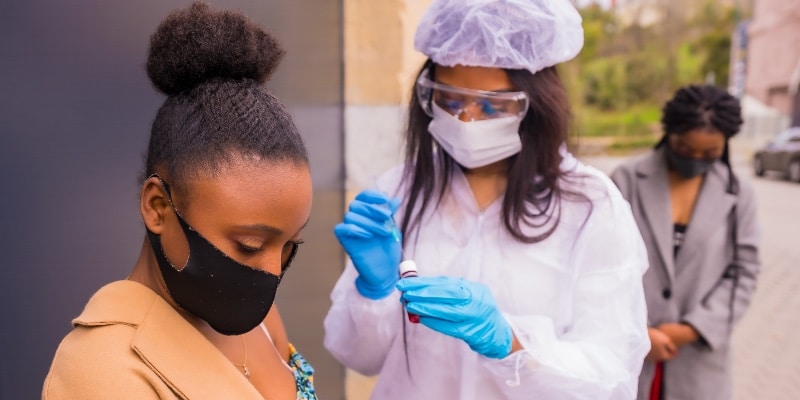Good news is on the horizon. In a recent press conference, President Biden announced that there will be enough COVID vaccine supply for everyone in the US to receive at least their first dose by May. This came shortly after the FDA approval of the Johnson and Johnson vaccine, the only one available that requires one shot instead of two.
The US is making significant progress when it comes to vaccine distribution. But experts still fear that it will take a while to reach the herd immunity necessary to keep the population safe. In addition to the fear and trepidation some feel about receiving the vaccine, many people are struggling to secure appointments. Mass vaccination sites are few and far between, often creating lines that last for hours. For some, simply figuring out how to sign up for an appointment is a struggle; for others, transportation and mobility present challenges.
The end result is that in cities and states across the country, hundreds of vaccines are going unused. If health professionals want to see COVID vaccination rates go up, it may take a more novel approach to how, and where, vaccination clinics are run. Here, we share three innovative approaches health professionals can take to meet consumers where they are:
Solution: Address the barriers to consumption
A preliminary step health professionals can take is to ask themselves, “What are the barriers preventing the average person from consuming vaccines?” In The Innovator’s Guide to Growth, the authors reveal the most common barriers to consumption as money, access, time, and skill. It’s up to health professionals to find unique and creative ways to reduce these barriers.
For instance, a major barrier is access to vaccination sites. I spoke to Hannah Brooks about how her apartment complex in Pennsylvania is addressing that barrier.
“A majority of residents at the Philadelphian are elderly, and some are bedridden. Despite wanting the vaccine, many simply can’t get to a vaccination site in the city. To address this barrier, the Philadelphian decided to bring the vaccine to its residents. Building management worked with Philly’s Centennial Pharmacy to secure doses, and we received an email with a sign-up form and relevant medical forms All we had to do was make our way into their hallway when personnel arrived on our floor. It was that easy!”
Solution: Address the “anxiety of new solutions”
When designing and marketing new products, there’s often a temptation to focus on ensuring the new solution is alluring enough to compel consumers to change. With vaccine campaigns, it’s no different—campaigns are spending significant energy educating consumers about the benefits of becoming vaccinated. However it’s equally important to address the powerful forces that block change. For instance, consumers often experience anxiety when considering new solutions.
Despite being educated about the benefits of the vaccine, there are many people across the country who feel anxious and distrustful about receiving it. One solution innovators are taking is to address their anxiety by bringing vaccination efforts into locations that are calming and partnering with leaders who are deemed trustworthy.
For instance, there are people who find it easier to trust religious figures than medical professionals. Knowing this, congregations across the country are partnering with pharmacies and health centers to provide vaccination clinics. In Baltimore, the Lieutenant Governor is working with religious groups to ensure fair and equitable vaccine access, as churches are not just used to target communities with a higher trust in religious figures, but are also used to address racial disparities in distribution.
Solution: Help people make progress on their own terms
While health professionals might hope people will get vaccinated solely because of the health benefits, in reality people have their own unique set of priorities, informed by their life circumstances. Instead of expecting people to get vaccinated because it’s “the right thing to do,” health professionals need to appeal to patients’ motivations, whether health related or not.
Tel Aviv is taking such an approach. To address those who are younger and potentially more hesitant about the vaccine, the city initially offered free food to vaccine recipients, but then went a step further. A mobile vaccination clinic was set up at a local bar, and offered a free drink to anyone receiving their first dose.
A lot of Tel Aviv residents were enticed by this model; many recipients were already going to the bar, so they didn’t have to go out of their way to get it. The Israeli government also enticed recipients by offering a Green Pass—government documentation about vaccine status, allowing holders access to different clubs and events.
Vaccine rollout is still continuing, and is providing the first promise of normalcy in a while. But ensuring maximum vaccine adherence is not simply achieved by making the vaccine available. There are a number of challenges standing in the way. Bringing vaccines into alternative spaces can help bridge those barriers, ensuring a higher number of vaccinated people and getting us one step closer to herd immunity.



